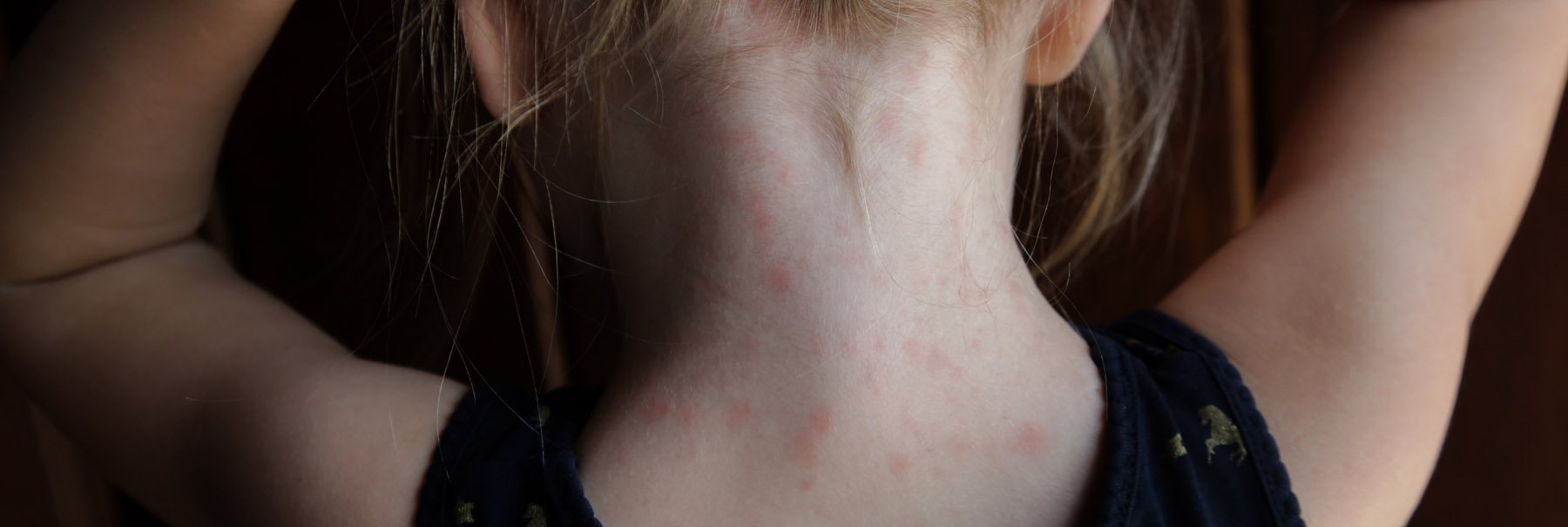Get Relief From Summer Rashes

If you’re like me, you hate itching. And, although mosquito bites are admittedly awful, rashes are worse. Rashes can stick around especially during summer in sunny South Florida.
Because in the summer, well, we sweat more.
Alright, alright … you may already know that. But, did you know that many summer rashes are caused by the overgrowth of yeast and fungus? And, what the top rashes are and how to tell them apart?
“The most common rashes are tinea versicolor (also called pityriasis versicolor), miliaria rubra (or prickly heat), phytophotodermatitis and several fungal infections of the skin (intertrigo, athlete’s foot, jock itch),” says Dr. Andrea Maderal, a University of Miami Health System’s dermatology expert.
These rashes have distinct features.
Tinea versicolor is a slightly scaly rash that occurs mostly on the back and chest, and causes the skin to lose pigment, or become lighter, in areas of rash, says Dr. Maderal. Patients will often have this rash every summer, and it resolves in the winter time. It caused by an overgrowth of yeast.
Miliaria rubra, or prickly heat, is caused by increased heat and sweating. It presents with very small, pinpoint red bumps in areas of increased sweating and occlusion. It can sometimes be associated with itching, and it tends to resolve within 1-2 hours of cooling of the area.
Phytophotodermatitis, sometimes referred to as “Lime” (not Lyme) disease, is a type of burn that can occur on the skin after lime juice, or other foods with certain photosensitive chemicals, come into contact with the skin and the patient goes outdoors into the sun. It presents with streaks of red blisters that over a few days turn into brown spots that can take several months to resolve.
Finally, the various fungus infections tend to present with redness, scaling and itching in areas of increased sweating, such as under the breasts, in between the thighs, and on the soles of the feet.
How do I get relief?
Since the heat isn’t really something you can get away from during the summer, it can be difficult to get rid of some rashes. Dr. Maderal suggests trying to keep high risk areas like under the breasts, under the armpits and the groin dry by using over the counter powders or deodorant.
Anti-fungal medications can be purchased to treat the fungus related rashes including tinea versicolor, which can be treated with antifungal creams ending in “-azole,” as well as antifungal shampoos, and zinc-containing shampoos or bars. Also, the doctor suggests discarding your shoes if you have a fungal infection on your feet.
For a prickly heat rash, the most beneficial thing you can do is move to a cooler environment. If that’s not possible or if there is any itching, an over the counter cortisone cream can be applied, says Dr. Maderal.
“Finally, for phytophotodermatitis, sun protection is critical to prevent further darkening of the dark spots, and avoidance of any contact of the skin with lime juice as well as other culprit foods (such as celery) prior to going in the sun is key,” she adds.
When to see a doctor
Although many summer rashes go away with at-home treatment, there are situations that may require medical attention. For instance, if a rash appears after going in the sun that is accompanied by fever, joint pain, or mouth sores, it’s a good idea to visit a doctor.
Also, if you experience widespread blisters or any rash with significant symptoms.
“Finally, if the rash does not respond to simple treatments listed above, they should follow-up with a dermatologist for alternative prescription medications,” says Dr. Maderal.
Natasha Bright is a contributing writer for the UMiami Health News blog.
Originally published on: August 27, 2018
Tags: contact dermatitis, dermatitis, Dr. Andrea Maderal, heat rash, prickly heat
